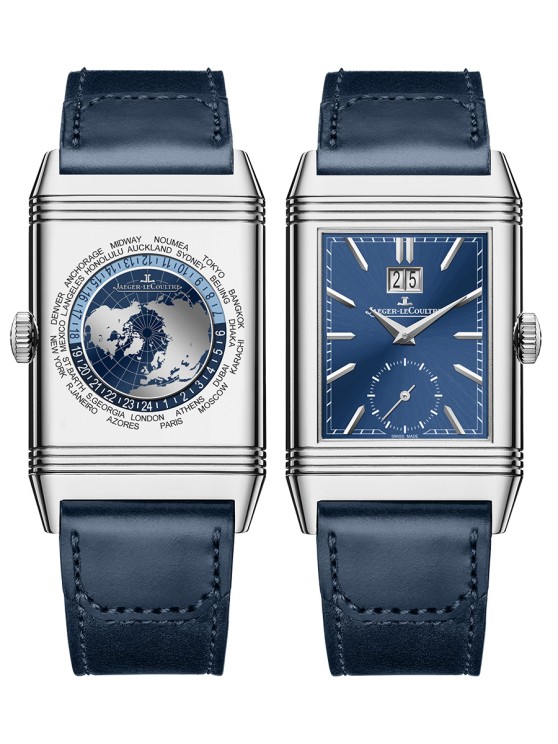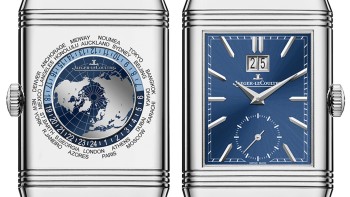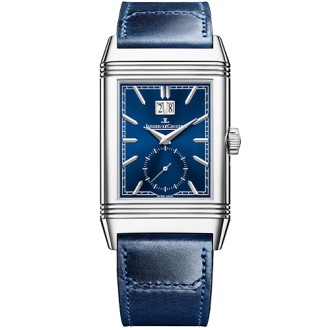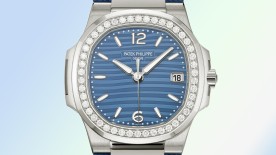Jaeger-LeCoultre introduces the Reverso Tribute Geographic, powered by a newly developed in-house movement, Calibre 834. A fresh interpretation of the quintessential travel time complication, displaying the world time indication on the reverse dial, it is presented in a steel case or an 18k pink gold (750/1000) case, the latter in a limited edition of 150 pieces. The new timepiece underlines the role that the Reverso has played as a catalyst for innovation over nine decades, ever since its unique swivelling case was invented in 1931.
From sports watch to high complications – innovation continues
Created in 1931, the Reverso was designed to meet the demands of the newly fashionable ‘sporting gentleman’. A challenge was set by polo-playing military officers in India during the British Raj to create a watch that could withstand the rigours of the polo field. The Reverso was the answer – a masterful integration of form and function. Quickly adopted by tastemakers from all walks of life, the Reverso soon transcended its original sporting purpose as new variations appeared – for both men and women. However, its iconic double-sided case and distinctive Art Deco lines have remained constant, making the Reverso one of the world’s most recognisable wristwatches.
The Reverso was produced as a time-only watch for the first six decades of its life. Then, at the beginning of the 1990s, recognising the revival of interest in mechanical watchmaking, Jaeger-LeCoultre began to introduce complications. Beginning in 1991, underlining its commitment to both technical and aesthetic innovation, the Manufacture developed six new Reverso calibres, each reintroducing one of the great classic complications. The mechanisms driving these complications had to be completely reconfigured to fit the Reverso’s case and, in many cases, the displays re-thought to ensure balance, harmony and legibility on the rectangular dials.

A world of time on the wrist
Aside from the practical value of displaying the time in 24 major time zones simultaneously, a World Time watch exudes romance and escapism. The genesis of the complication lies in the decision made in 1884 to establish standardised global time, with the Greenwich Meridian in London as the reference, or prime meridian. Despite numerous early attempts at world-time complications, it was not until 1931 that Geneva watchmaker Louis Cottier invented the first successful ‘Heure Universelle’ mechanism. Most modern world-timer mechanisms are derived from his inventions. Having first mastered the complication in 1958 with the Memovox World Time, Jaeger-LeCoultre’s watchmakers have introduced world timers in several models: Memovox, Geophysic, Polaris and Duometre. In 1998, Jaeger-LeCoultre introduced the Reverso Géographique, its first interpretation of the Reverso as a travel watch. This timepiece was one of the six complicated Reversos launched during the 1990s in limited editions of 500 pieces. In 2025, La Grande Maison presents the complication in the Reverso Tribute line for the first time.
Refined craftsmanship and timeless aesthetics enhance an evocative complication
On the understated front dial, the sunray finish in rich blue (for the steel case) or chocolate (for the pink gold case) complements the signature iconography of the Reverso Tribute. The large date display is contained within a frame of polished metal that matches the case and amplifies its rectangular lines. The circular small seconds display provides a counterpoint to the linear geometry and echoes the circular world time display, revealed when turning the watch over.
On the reverse side, the world time display is set into the polished caseback. On the steel model, details in shades of blue contrast with the cool tones of the metal, while the warmth of the pink gold model is complemented by black and grey details. The construction of the display on three different levels creates a remarkable effect of visual depth. The city names are engraved directly onto the caseback; set within the aperture, the rotating 24-hour ring indicates day and night; in the centre is the world map – marked with the longitudes that provide additional visual orientation in relation to the time zones.
Created in-house at the Jaeger-LeCoultre Manufacture, the map combines the crafts of lacquering and laser engraving. Beginning with a smooth disc of steel, the areas representing the oceans are hollowed out with a laser, leaving the land masses and meridian lines as raised areas. Then, lacquer is applied to fill in the oceans. Given the intricate shapes of the map and fine details of the meridian lines, the lacquer must be applied, by hand, in carefully controlled drops using a syringe. The finished disc is polished multiple times and, while a perfectly uniform finish is essential, the lacquer and metal reflect the light differently, creating a subtle three-dimensional effect.
The new Reverso Tribute Geographic is presented with two interchangeable straps designed by Casa Fagliano, the celebrated Argentinian maker of polo and riding boots. For the steel model, one strap combines leather and canvas – inspired by the canvas-and-leather boots that Casa Fagliano makes for summer polo – and one is entirely in calf leather; the pink gold model features one strap in golden-tan calfskin and another in black alligator.
A new integrated movement entirely designed, produced and assembled in-house
Developed specifically for the Reverso Tribute Geographic, Calibre 834 was designed, produced and assembled entirely in-house; as always at Jaeger-LeCoultre, it is a fully integrated calibre rather than an added module. Given La Grande Maison’s philosophy of designing shaped movements that closely follow the contours of their case, the rectangular Reverso creates a particular challenge when designing complications that were traditionally conceived for round movements.
The integrated world time complication drives the classic style of 24-hour time zone display with a world map at its centre. However, there is a key difference in its operation: in most world timers, when setting the reference city to 12 o’clock, the city disc rotates while the 24-hour display remains static. Jaeger-LeCoultre has inverted this relationship, with a static display of city names and a rotating 24-hour ring, a design choice made to offer better legibility of the complication, and a one-of-a-kind display of the function. To ensure precise setting of the hour, the 24-hour ring jumps in hourly increments. The hours are set using a discreet pusher hidden between the lugs at the top of the case.
For the Grande Date display, Jaeger-LeCoultre’s engineers developed and patented a new shape of the date discs in 2021 to accommodate it within the confined space of the rectangular Reverso case. It comprises two small side-by-side discs (one for the units 1–9 and one for the 10s, 20s and 30s) rather than two “stacked” discs, as is normal. When the date passes single digits, a tiny hook on the units disc latches on to the other disc, turning it to create the double-digit reading (10th, 11th, 12th, etc.). This has the added benefit of displaying both digits on exactly the same plane, rather than one slightly lower than the other.
Testament to the 180 skills gathered under one roof in Jaeger-LeCoultre’s fully integrated Manufacture, the Reverso Tribute Geographic celebrates the versatility and eternal modernity of the Reverso design, underlining La Grande Maison’s constant quest to innovate in both the mechanical and aesthetic aspects of timekeeping.






